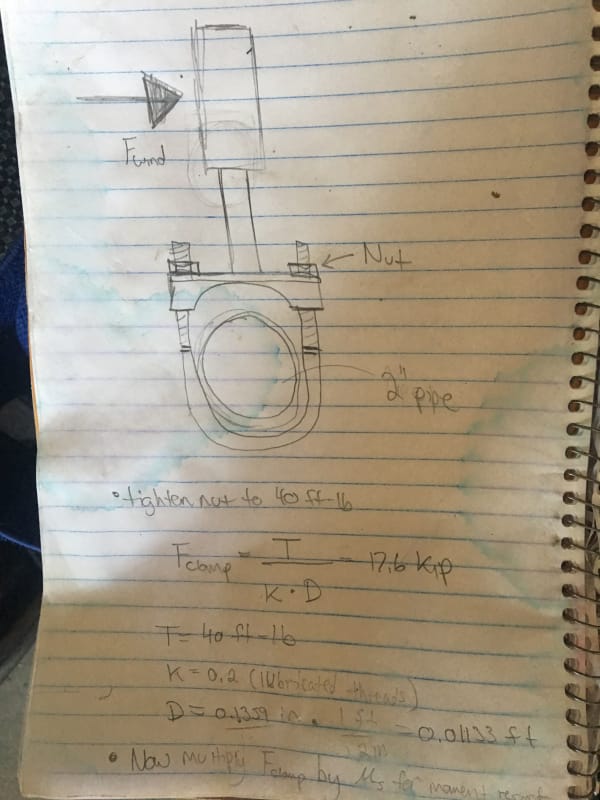LeonhardEuler
Structural
- Jun 19, 2017
- 200
Can anyone help me with predicting the local strength of a round handrail pipe being clamped by a U-bolt. Also help predicting the moment strength of the u-bolt from the predicted clamping force


Follow along with the video below to see how to install our site as a web app on your home screen.
Note: This feature may not be available in some browsers.

